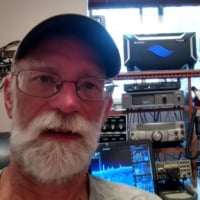Welcome to the FlexRadio Community! Please review the new Community Rules and other important new Community information on the Message Board.
Need the latest SmartSDR or 4O3A Genius Product Software?
SmartSDR v4.1.3 | SmartSDR v4.1.3 Release Notes
SmartSDR v3.10.15 | SmartSDR v3.10.15 Release Notes
The latest 4O3A Genius Product Software and Firmware
SmartSDR v4.1.3 | SmartSDR v4.1.3 Release Notes
SmartSDR v3.10.15 | SmartSDR v3.10.15 Release Notes
The latest 4O3A Genius Product Software and Firmware
If you are having a problem, please refer to the product documentation or check the Help Center for known solutions.
Need technical support from FlexRadio? It's as simple as Creating a HelpDesk ticket.
Need technical support from FlexRadio? It's as simple as Creating a HelpDesk ticket.
Question on digital data transmission for flex-6500
Noel
Member
Hello,
I'm trying to get a better understanding on how digital modes are transmitted from the Flex-6500. With voice, because it's already audio, I'm assuming that it just gets modulated with SSB and is then sent out. However, when dealing with the digital modes, is the I/Q data sent in a similar way by first converting the in-phase and quadrature streams into audio and then performing SSB modulation?
Thanks,
Noel
I'm trying to get a better understanding on how digital modes are transmitted from the Flex-6500. With voice, because it's already audio, I'm assuming that it just gets modulated with SSB and is then sent out. However, when dealing with the digital modes, is the I/Q data sent in a similar way by first converting the in-phase and quadrature streams into audio and then performing SSB modulation?
Thanks,
Noel
0
Answers
-
No the output of the Digital Software, like WSJT-X is Analog but is sent through a Virtual Audio Cable via the DAX module computer to SSDR. When You have a signal coming in via DAX you could switch between USB and DigiU the difference is under DigiU all equalization and audio processing are turned off.
1 -
In digital, the signal changes in frequency, phase, and or amplitude. There is no modulation like inserting a tone on the carrier. .
0 -
The various digital modes are really analog signals when they hit the air. If you think about good ol rtty, there are two tones that represent a binary state, zero or one. Combinations of zeros and ones create the characters of a message. More modern modes like FT8 have more tones and different timing. Those tones can indeed be sent as audio to an SSB transmitter. Your 6500 set up in DIGIU, for example, is doing just that. Because you are feeding audio from a program like WSJT, it is just audio, not quadrature components. If an SDR radio was generating the modulation directly, it would likely be a different story. Did that help? 73, Len, KD0RC1
-
Hi Len,
Thank you for the response. This is making sense. So in my case of the 6500 in DIGIU mode, this means that the digital signals are initially audio upon generation (i.e. they are not created as I/Q data initially and then converted to audio)?
Thanks,
Noel0 -
Combining what Erika and Len said and simplifying:
The output of the common digi programs (FLDigi, WSJT) is audio. That audio is fed into the rig and uses USB modulation. Many rigs, including flex, have dedicated digital modes that are essentially USB the DSP and audio processing turned off.
A few digi programs (winrad, cwskimmer, gnuradio etc) will accept IQ signals as input to do SDR operations.
1 -
Hi Dale,
Thank you for the response. So just to make sure I'm understanding it, this means that the DigiU modes in the Flex-6500 are strictly generating audio (i.e. there is no initial generation of I/Q samples and then conversion to audio)? Does the same follow for the analog modes supported on the Flex-6500?
Thanks,
Noel0 -
Hi Dale,
I also forgot to ask is the output of the DigiU modes digital or analog audio?
Thanks,
Noel Teku0 -
The Flex modes set the modulation (FM/USB/LSB/etc). The DIGU mode is USB modulation without additional audio processing. For transmitting, the audio is generated by the digi program (WSJT-X, FLDigi, etc). The Flex DAX system is doing audio transport. It replaces what would be a sound card and audio cables with most rigs.0
-
Correct!0
-
Noel, I think your confusion is around the word "digital". We call them digital modes, but the RF signal is a set of tones. In the simple rtty case, you can have a transmitter send mark and space tones by shifting the freq of the radio, or you can send two different audio tones to a SSB transmitter. While generated differently, the signal at the receiver is identical. Since the Flex is not generating any digital modes on its own, we rely on third party programs to generate the tones. They will work on any SSB transmitter as they are just audio. On receive, programs like CW Skimmer use I/Q inputs so that they can look at a band of frequencies. This lets you simultaneously decode many signals. This use of quadrature signals is not needed for generation of the signal for transmission as you are only creating one output at a time. Make sense? 73, Len, KD0RC2
-
And then there is the matter of “digital audio”. When we speak of digital audio, we are really speaking of the output of digital sampling of analog audio. In the case of the digital mode apps, they produce audio that is already in the digital sampled audio domain. In an analog radio, that digital audio from the digital mode programs will be converted to analog audio by the computer’s audio card (or a SignLink et al) or the radio’s audio card. Thus, the audio in these radios always makes its way into the analog domain before being added to the RF signal.
In the case of SDR radios, the digital domain audio goes directly to the modulator of the direct conversion transmitter without ever hitting the analog domain (although of course the direct digital conversion transmitter is doing a digital to analog transformation :-) The audio stayIng in the digital domain could be true of the radios with USB audio input I would assume, as well as of course the Flex.0 -
Hi Ted, if the Flex were coded to have the digital modes natively, creating an audio stream would not be necessary. The Flex team decided not to clutter the radio with all of these modes, relying on third parties and a robust audio exchange (DAX) to accomplish digital communications. I was kind of hoping for the more popular modes to be implemented natively, but I certainly understand Flex's reasoning. Now that I have owned my 6400 for a few months, I don't miss having the additional modes implemented natively vs via third party apps. 73, Len, KD0RC0
-
Hi Len,
Thank you for the response. This does make sense, but I'm still a little confused about something. Let's say we want to transmit with QPSK modulation (either through FLDigi, SmartSDR, or some other program) on the Flex-6500. QPSK modulation is implemented by mapping symbols into two streams (I and Q) and doing some pulse shaping on each stream. How does the Flex-6500 (or any Flex in the 6000 series) handle QPSK transmissions or is something else required for this to be done?
Thanks,
Noel0 -
The software uses those I and Q streams to generate audio. That audio is what gets shipped to the Flex for transmission. Radios are big gearboxes that convert between EM signals in the MHz range and audio vibrations in the kHz range. If you want to transmit something with your Flex, it needs to start as audio. You can generate that audio with a tone (cw), your voice (phone), or software (digi).0
-
Hi Noel, The Flex 6000 series radios and SmartSDR have not implemented other modulation schemes besides the usual, SSB, CW, AM etc.that you see when you drop down the mode window. QPSK and BPSK signals, like PSK31, are generated in whatever program you are using (e.g. FLDigi), then passed to the transmitter (analog or SDR) as an audio stream. The I and Q streams used to generate the QPSK signal are summed after a 90 degree phase shift so you lose the identity of I and Q, and you are left with a plain old audio feed to the transmitter. If it didn't work this way, analog rigs would not be able to transmit on the digital modes.
There is a waveform manager in SmartSDR that I believe was intended to allow other modulation schemes, but I don't know if there are any waveforms currently available.
73,
Len
0 -
DIGIU removes compression and equalization from the transmitted audio. This keeps the TX audio flat across the TX bandwidth. Dave wo2x1
Leave a Comment
Categories
- All Categories
- 379 Community Topics
- 2.1K New Ideas
- 631 The Flea Market
- 8.2K Software
- 122 SmartSDR+
- 6.4K SmartSDR for Windows
- 183 SmartSDR for Maestro and M models
- 430 SmartSDR for Mac
- 271 SmartSDR for iOS
- 259 SmartSDR CAT
- 193 DAX
- 382 SmartSDR API
- 9.3K Radios and Accessories
- 39 Aurora
- 262 FLEX-8000 Signature Series
- 7.2K FLEX-6000 Signature Series
- 947 Maestro
- 56 FlexControl
- 866 FLEX Series (Legacy) Radios
- 924 Genius Products
- 463 Power Genius XL Amplifier
- 336 Tuner Genius XL
- 125 Antenna Genius
- 297 Shack Infrastructure
- 209 Networking
- 460 Remote Operation (SmartLink)
- 144 Contesting
- 787 Peripherals & Station Integration
- 139 Amateur Radio Interests
- 1K Third-Party Software



